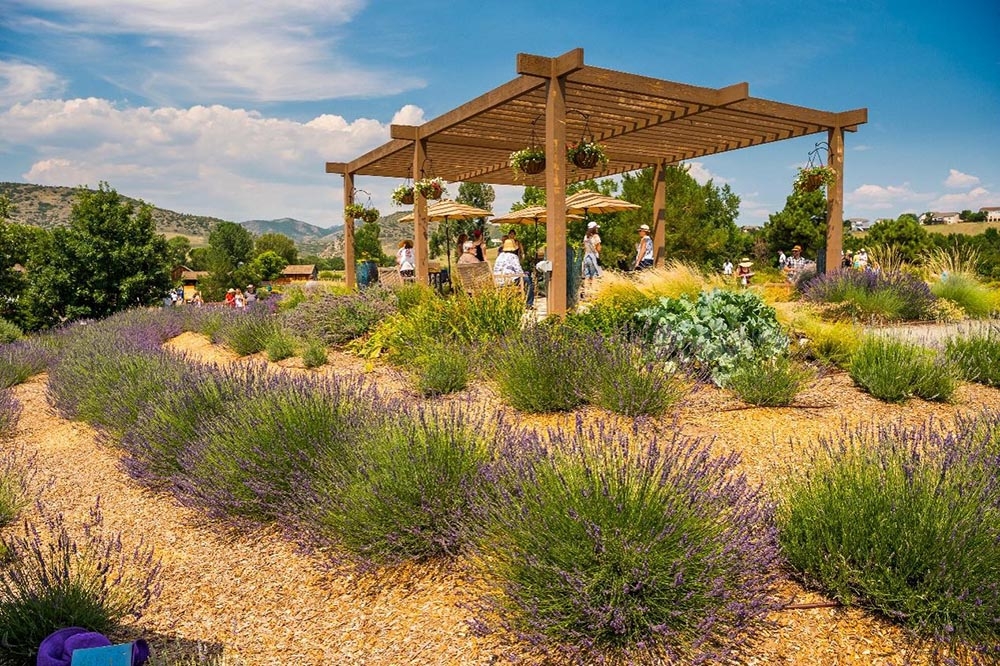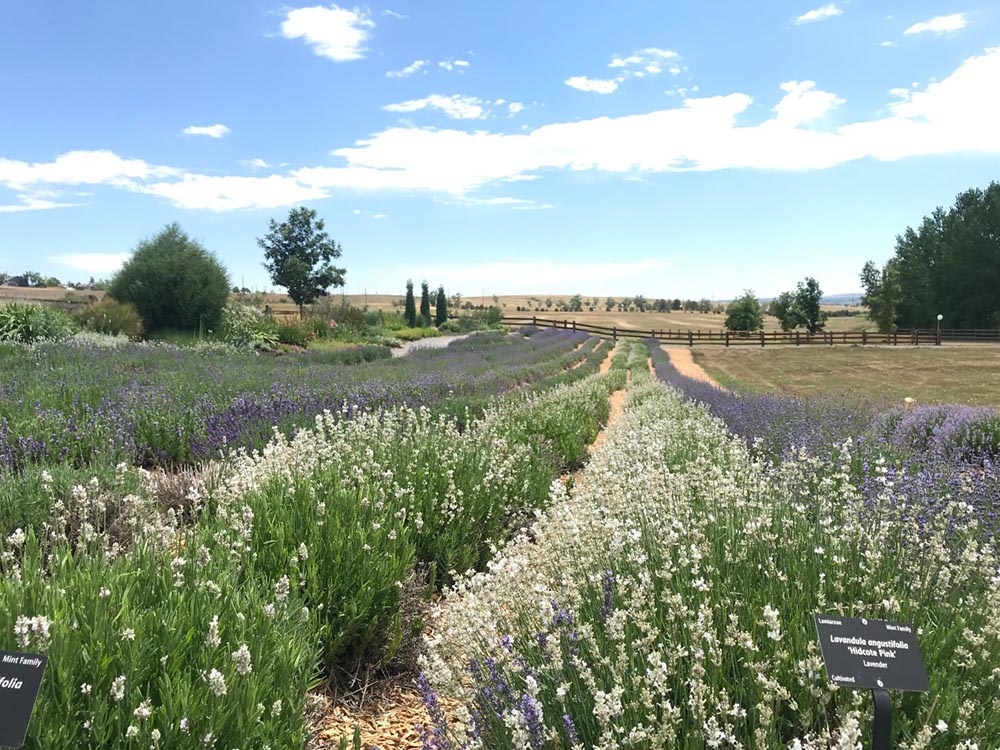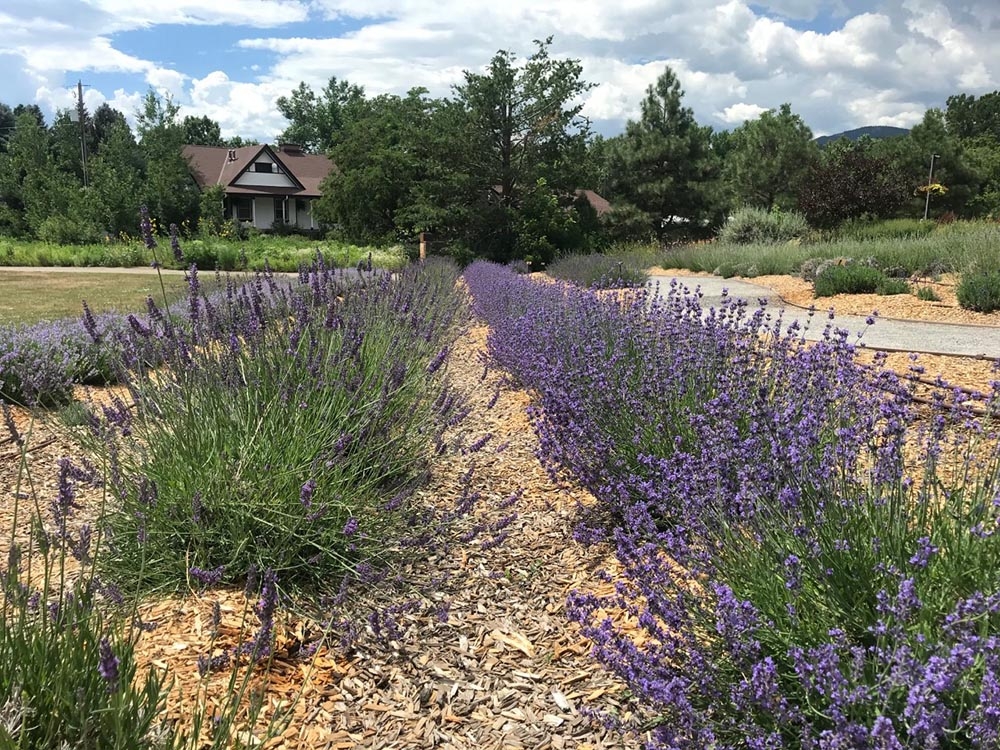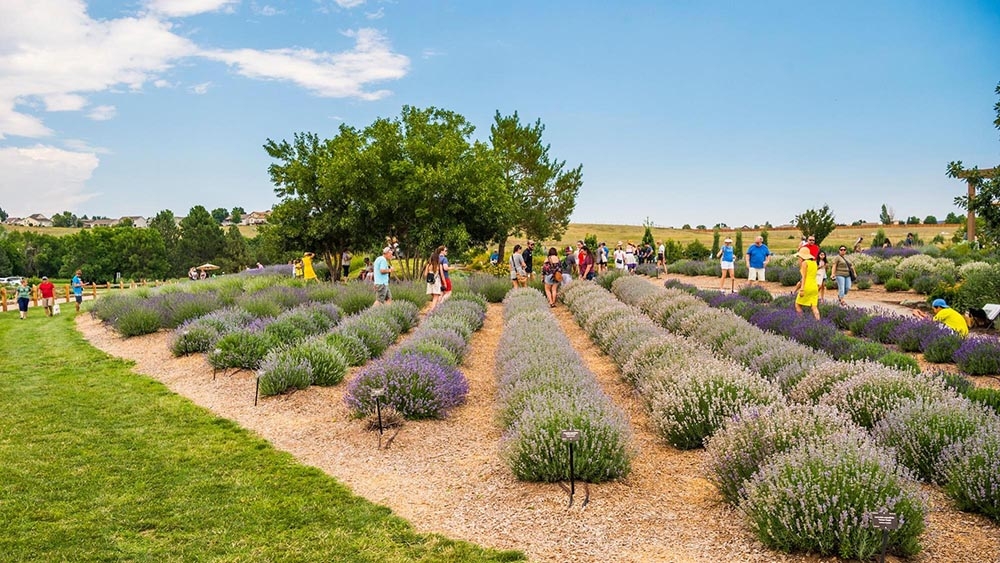July Walking Tour – Lavender Garden
Access the Lavender Garden at Chatfield Farms through the entrance just south of the ticket booth. From here, close your eyes and take a deep breath through your nose. What do you smell? Is it sweet and floral? Is it herbal and maybe a little spicy?
Lavender, genus name Lavandula, is native to the Mediterranean region, northern Africa and eastern Asia. Lavender's affinity for hot and dry climates and lean rocky soils makes it the perfect crop for Colorado. This year, the collection saw some damage due to unusually cold temperatures in the winter and a cool and very rainy spring. As you walk through the collection, take notice of the species and cultivars that faired the best through the extreme weather conditions.
From the top of the entrance, take the path to the east. This side of the collection was planted in 2018. To your right you will see rows of purples, blues and whites (Lavandula × intermedia ‘Edelweiss’). To your left and up ahead look for rows of light pink (Lavandula angustifolia ‘Hidcote Pink’ and ‘Faire Pink’). The light amethyst shades of Lavandula angustifolia ‘Munstead’ emphasize the indigo blooms of Lavandula angustifolia ‘Hidcote Superior’. Take a whiff. Which smells sweeter?
Rows of compact mounds like Lavandula angustifolia ‘Schola’ (a.k.a. ‘Blue Cushion’ lavender), sit between rows of tall and spiky varieties. The dark purple spikes of (Lavandula × intermedia ‘Riverina Thomas’) are visible on the lower hillside. The hybrid Lavandula × intermedia is commonly known as “lavandin” rather than “lavender.” Scan your surroundings; can you find other lavandin cultivars in your midst?
Walk toward the wooden pergola to find some partial shade and cooler air. Take a break here and look around. You are surrounded by curved rows, many of which were newly planted between 2020-2022. These lavender plants may be small, but still give brilliant displays of blooms. After three full seasons, a lavender plant is considered mature. Some of these little ones have a couple more years to reach maturity.
Head down to the circular labyrinth below you. There are two paths through the labyrinth. Each planted with low growing xeric and alpine perennial plants.
To the west is a short meandering path through the Rock Garden. You can choose to take this leisurely walk or continue southwest on the gravel path toward more lavender fields.
To the south are rows of Lavandula angustifolia ‘Twickel Purple’ and ‘Hidcote Superior’. The largest of these were planted in 2015 and are the oldest in the collection. These cultivars are often more appropriate for culinary uses. At the end of July, look for groups harvesting these rows for some of our culinary partners, including Stem Ciders. Lavender from our fields is used to flavor their popular lavender cider!
Finish your tour of the Lavender Garden by taking a stroll through the seasonal Butterfly House. In partnership with the Butterfly Pavilion in Westminster, this hoophouse is filled with native butterflies who enjoy an array of flowering annual plants. The design of the butterfly house changes every year so make sure to swing by and catch this season’s display.
Experience the Lavender Garden at Lavender Festival, July 15 & 16, with live music, food and drink vendors, and activities for the whole family.
Gallery




Add new comment